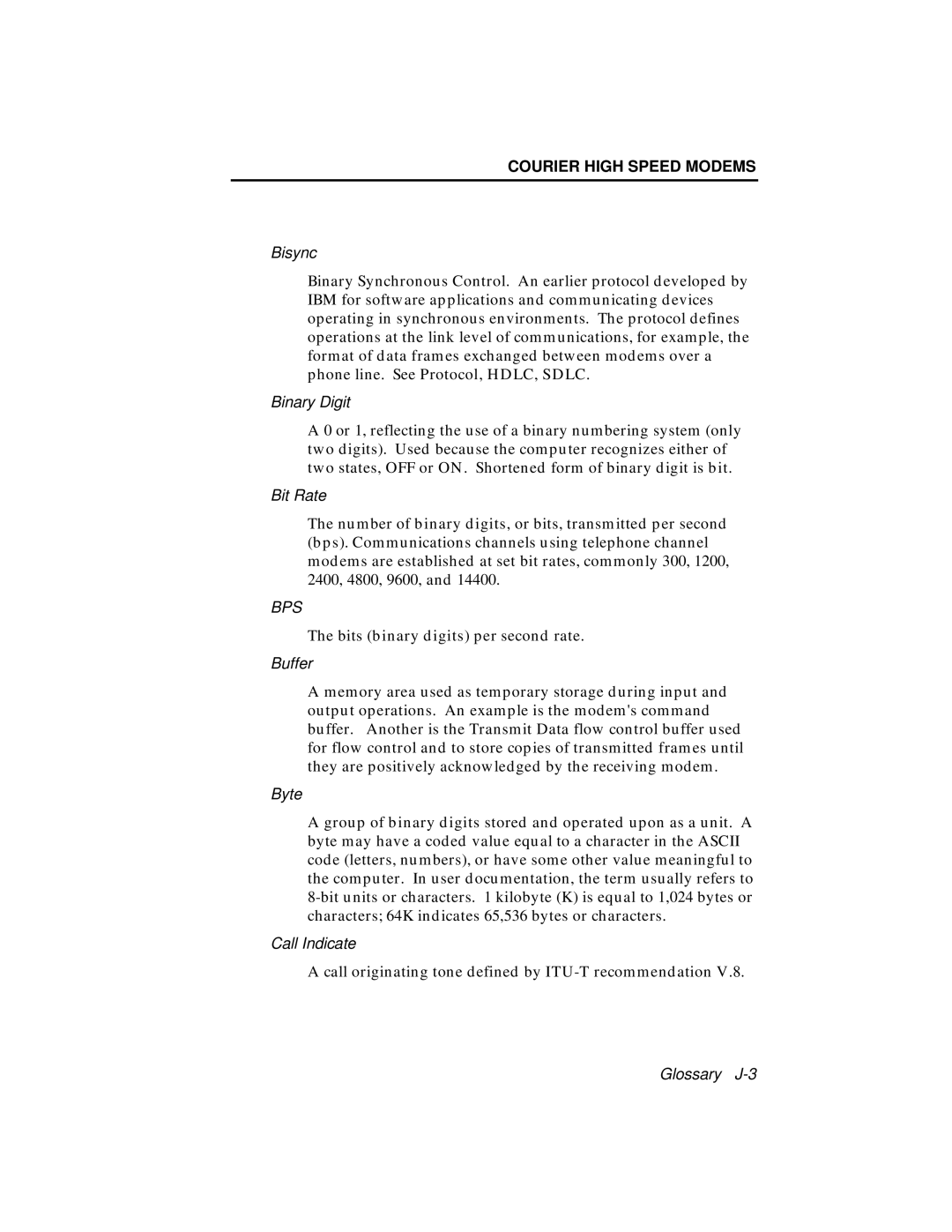COURIER HIGH SPEED MODEMS
Bisync
Binary Synchronous Control. An earlier protocol developed by IBM for software applications and communicating devices operating in synchronous environments. The protocol defines operations at the link level of communications, for example, the format of data frames exchanged between modems over a phone line. See Protocol, HDLC, SDLC.
Binary Digit
A 0 or 1, reflecting the use of a binary numbering system (only two digits). Used because the computer recognizes either of two states, OFF or ON. Shortened form of binary digit is bit.
Bit Rate
The number of binary digits, or bits, transmitted per second (bps). Communications channels using telephone channel modems are established at set bit rates, commonly 300, 1200, 2400, 4800, 9600, and 14400.
BPS
The bits (binary digits) per second rate.
Buffer
A memory area used as temporary storage during input and output operations. An example is the modem's command buffer. Another is the Transmit Data flow control buffer used for flow control and to store copies of transmitted frames until they are positively acknowledged by the receiving modem.
Byte
A group of binary digits stored and operated upon as a unit. A byte may have a coded value equal to a character in the ASCII code (letters, numbers), or have some other value meaningful to the computer. In user documentation, the term usually refers to
Call Indicate
A call originating tone defined by
Glossary
